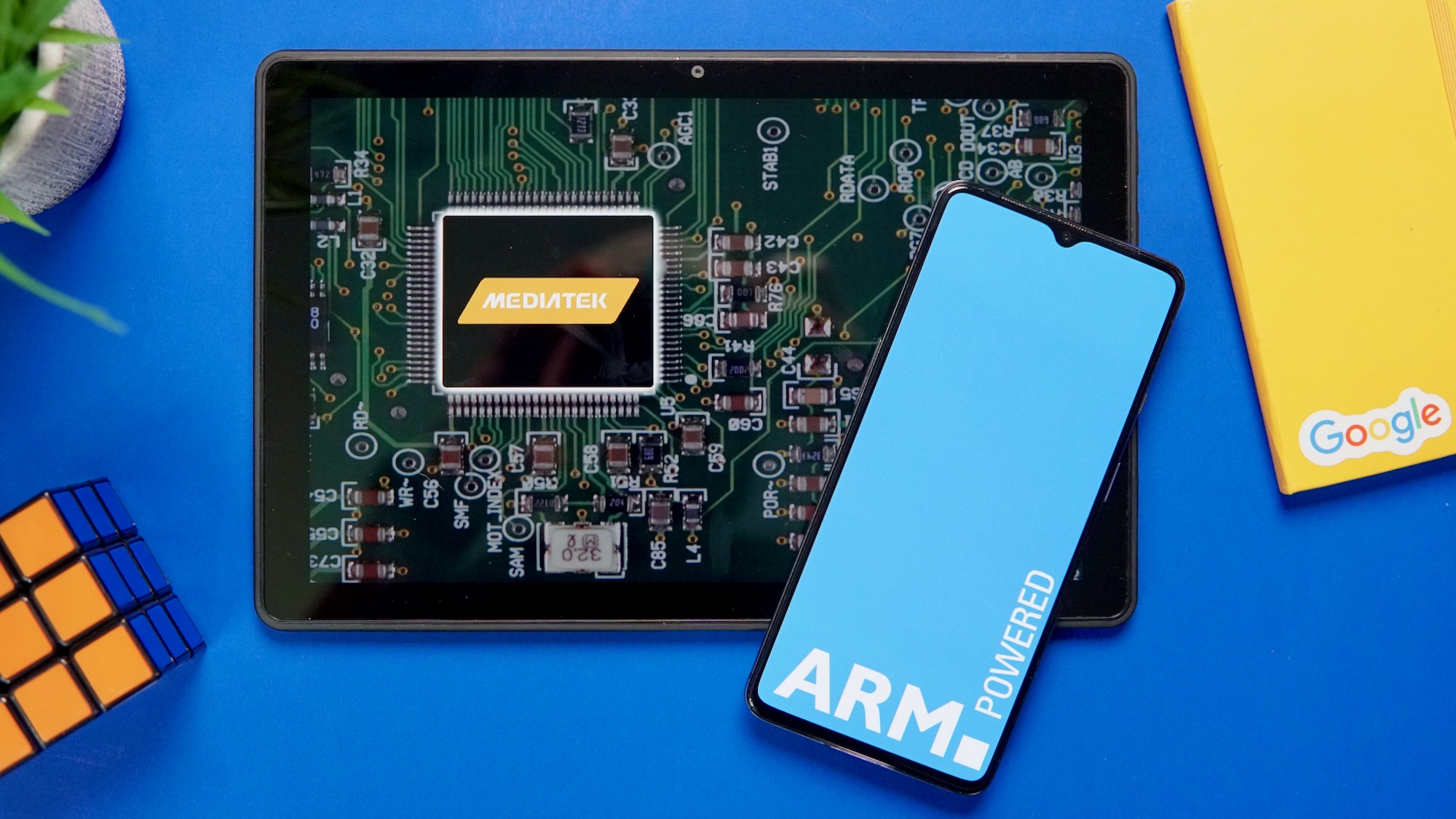The Age of ARM is here...and not just with Apple.
Snippets from an article from one of the leading ChromeOS blogs, Chromeunboxed.
" This week, MediaTek announced a whole bunch of stuff at their annual summit, but buried right in the middle of everything they spoke of, there were 2 new chips officially announced that will be added to the current MediaTek SoC (the MT8183 currently on display in the Lenovo Chromebook Duet and a few others) to round out MediaTek’s Chromebook offerings. Gabriel posted about this announcement on Tuesday if you’d like the overall breakdown on those two new chips – the MT8192 and MT8195 – but
for today, we want to talk about why these chips are important moving forward.
Though there are differences in chips with the same Cortex cores, they aren’t wildly different. In a side-by-side of Cortex-A76 chips from MediaTek and Qualcomm, there’s only a 7% performance gain in Qualcomm’s chip and some of that can be chalked up to the 7nm process in the Snapdragon 855 versus MediaTek’s 12nm in the Helio G90. With these new Chromebook chips from MediaTek being 7nm (MT8192) and 6nm (MT8195) processes, that won’t be nearly as much of a gap.
These new ARM chips from MediaTek will only make that experience better and better as seen with little updates to games like PUBG Mobile for Chromebooks with MediaTek ARM chips inside. Where we see this game still struggle on far more powerful Intel-powered Chromebooks, it runs quite well on even the under-powered Lenovo Chromebook Duet. There’s no question about it: Android apps work much better on ARM-powered Chromebooks.
Now that we have Qualcomm taking their first dive into the Chromebook waters and MediaTek clearly ready to step fully into the market with their best hardware foot forward, I think the shift to ARM is truly beginning for Chrome OS. Will Google – like Apple – go all in on ARM and leave Intel by the wayside? Not any time soon, if ever. Instead, Chrome OS is an operating system that is flexible enough to handle both ARM and x86 natively without emulators, allowing the user to choose what is more important to them in a device. If absolute power is the goal, you’re likely going to be in the Intel camp for some time. If thin, light, silent, long-lasting Chromebooks that run Android apps like a champ are more your speed, hold on just a bit longer. The ARM revolution is coming for Chromebooks in 2021, starting with MediaTek, and we’re in for a very interesting ride. "
Snippets from an article from one of the leading ChromeOS blogs, Chromeunboxed.
" This week, MediaTek announced a whole bunch of stuff at their annual summit, but buried right in the middle of everything they spoke of, there were 2 new chips officially announced that will be added to the current MediaTek SoC (the MT8183 currently on display in the Lenovo Chromebook Duet and a few others) to round out MediaTek’s Chromebook offerings. Gabriel posted about this announcement on Tuesday if you’d like the overall breakdown on those two new chips – the MT8192 and MT8195 – but
for today, we want to talk about why these chips are important moving forward.
Though there are differences in chips with the same Cortex cores, they aren’t wildly different. In a side-by-side of Cortex-A76 chips from MediaTek and Qualcomm, there’s only a 7% performance gain in Qualcomm’s chip and some of that can be chalked up to the 7nm process in the Snapdragon 855 versus MediaTek’s 12nm in the Helio G90. With these new Chromebook chips from MediaTek being 7nm (MT8192) and 6nm (MT8195) processes, that won’t be nearly as much of a gap.
These new ARM chips from MediaTek will only make that experience better and better as seen with little updates to games like PUBG Mobile for Chromebooks with MediaTek ARM chips inside. Where we see this game still struggle on far more powerful Intel-powered Chromebooks, it runs quite well on even the under-powered Lenovo Chromebook Duet. There’s no question about it: Android apps work much better on ARM-powered Chromebooks.
Now that we have Qualcomm taking their first dive into the Chromebook waters and MediaTek clearly ready to step fully into the market with their best hardware foot forward, I think the shift to ARM is truly beginning for Chrome OS. Will Google – like Apple – go all in on ARM and leave Intel by the wayside? Not any time soon, if ever. Instead, Chrome OS is an operating system that is flexible enough to handle both ARM and x86 natively without emulators, allowing the user to choose what is more important to them in a device. If absolute power is the goal, you’re likely going to be in the Intel camp for some time. If thin, light, silent, long-lasting Chromebooks that run Android apps like a champ are more your speed, hold on just a bit longer. The ARM revolution is coming for Chromebooks in 2021, starting with MediaTek, and we’re in for a very interesting ride. "


Comment